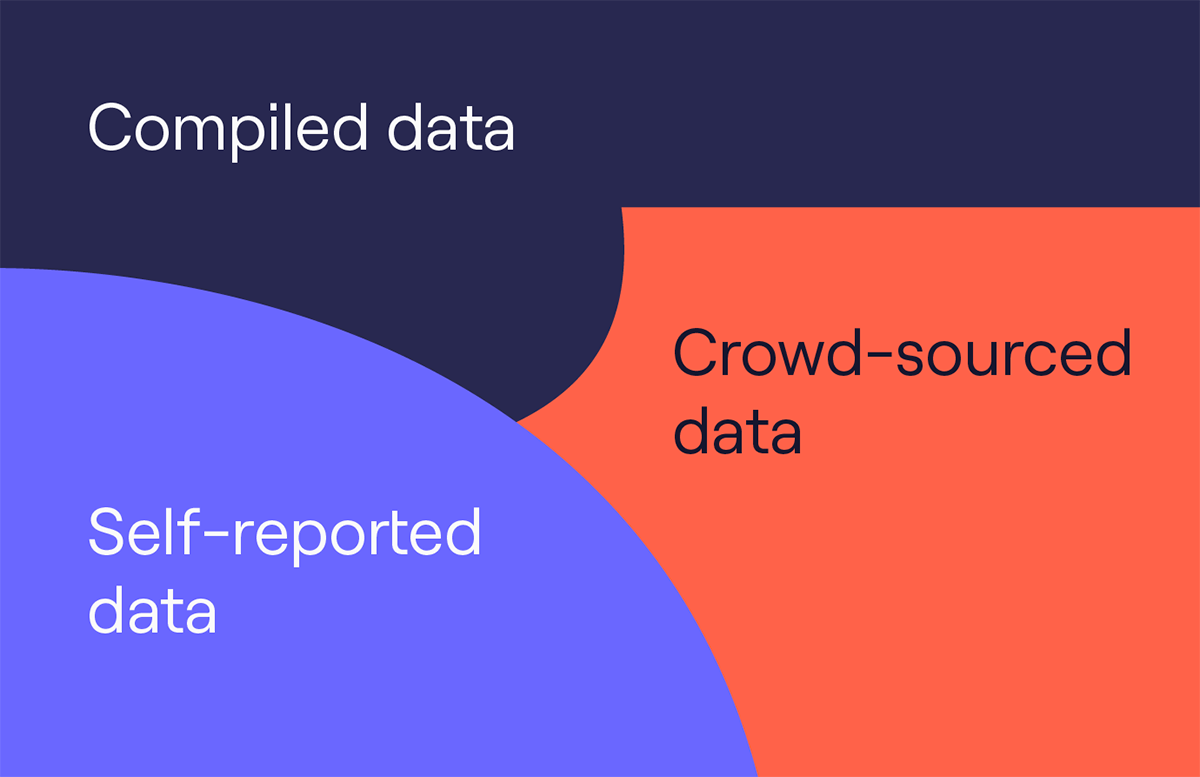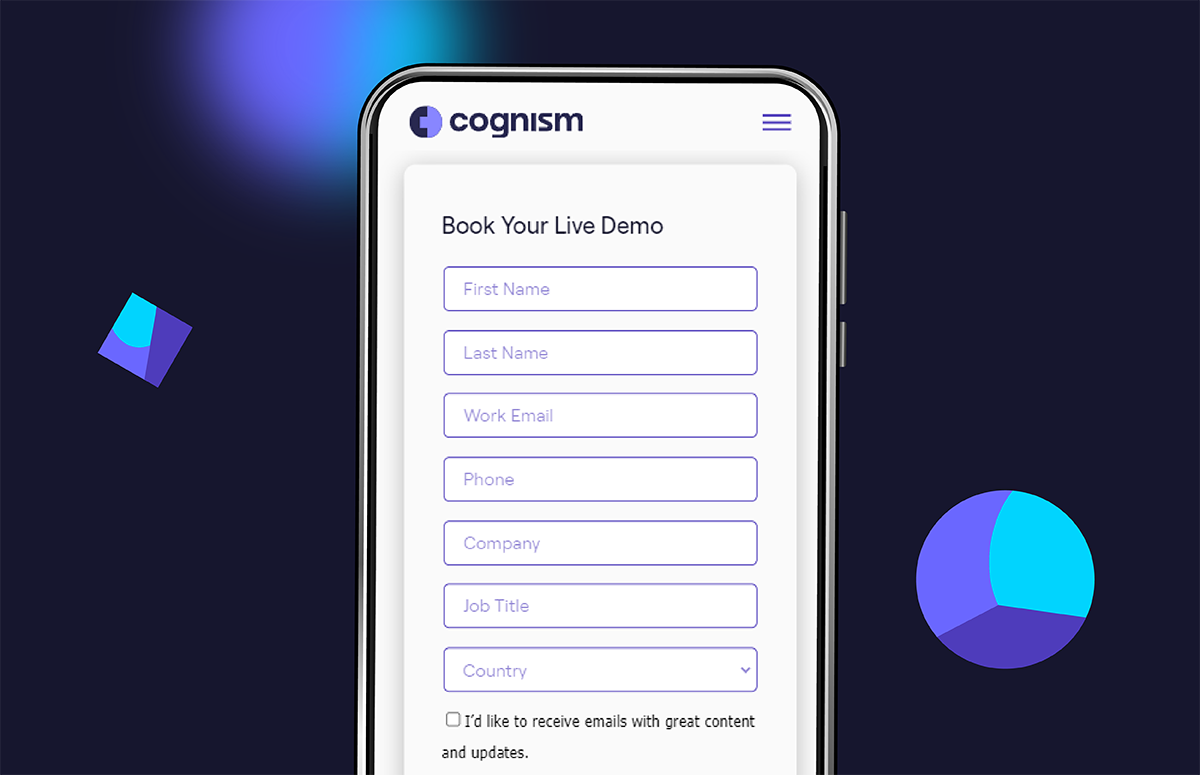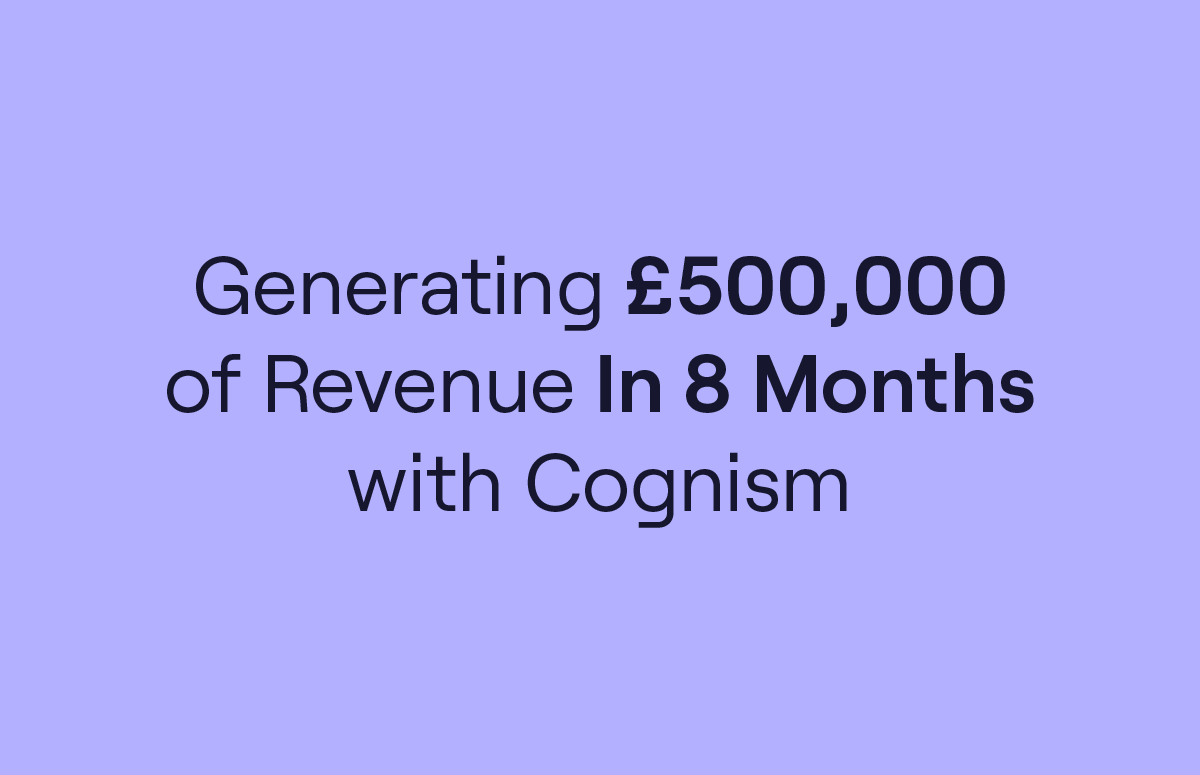Enterprise Selling Guide: 12 Actionable Tips
What's on this page:
For salespeople used to selling into SMBs/mid-market, selling into enterprise must look like a daunting challenge.
The companies are bigger. There are more people you have to talk to. And there isn’t just one decision-maker; there are whole tribes of decision-makers you have to win over.
That said, we’re here to tell you that enterprise selling isn’t impossible; it’s just different.
To help you make sense of it, and to get you started on your own enterprise sales journey, we’ve called on the expertise of Simon Waller and Al Zia Pervaiz, two of Cognism’s top AEs.
Their actionable tips will help you scale the walls of enterprise today.
Scroll 👇 to start learning!
1. Find good-fit companies, not just famous names
For Al Zia Pervaiz, this is the crucial first step in enterprise sales prospecting.
“Same as in prospecting to SMBs/mid-market, find a good-fit company for your product or service. Resist the temptation to just go after big names or famous brands.”
“Instead, have some criteria in mind, then check your target orgs against your criteria. Do they match?”
Here are some example criteria used by Cognism’s B2B sales team:
- Is the company hiring more sales staff?
- Is the company expanding into EMEA?
- Is the company using a competitor?
2. Map the company’s internal structure
Al stressed the importance of taking this step.
“After you’ve found a good-fit company, what you have to do next is map that company from bottom to top. To make a success of enterprise sales, you have to speak with people in all the different layers of a company - from SDRs up to managers, directors and the C-suite.”
“So you’ll need a good understanding of the company structure, who sits where and who reports into who. And you have to go deeper than just job titles - one thing to be aware of in enterprise is that job titles can be misleading.”
Al shared an example from his enterprise selling days:
“You can have Sales Directors who are really just Senior SDRs. So you have to understand not just who that person is and where they sit, but what their responsibilities are.”
3. Prospect to juniors first
Once you’ve mapped the company and the people inside it, the next step is to start prospecting!
But where to start?
Easy - at the bottom!
Simon Waller explained this unique outbound sales approach to us:
“At the beginning, we do some fact-finding missions. We start from the bottom up, so we talk to SDRs and middle management. We get to understand the company’s processes and pain points.”
“Then we tailor our pitches to different stakeholders - it’s the company’s own information that we’re using and, because of this, it’s information that has real clout with the decision-makers at the top.”
Simon shared a practical example:
“If we’re told by an SDR in the organisation that they’re using a competitor of ours but they don’t like the data, then we can take that pain point and use it in our messages to the leadership team.”
Simon recommended this as a good course of action for enterprise fact-finding:
“Start by contacting 20-30 junior people in a sales cadence. Start by cold calling them initially, then expand your cadence out with emails, LinkedIn messages and video.”
“I’d definitely recommend using multiple channels to prospect. Enterprise orgs are large and contain multiple layers. It can take dozens of LinkedIn notes, emails and phone calls to break into a company!”
4. Focus on pain points
When you’ve got your enterprise junior on the phone, there are some important questions you have to ask them.
As ever in B2B prospecting, you have to uncover their pain points.
Simon’s discovery questions are based around information-gathering and gaining some quantifiable metrics:
- What tools are they using to generate new business? Are they using a competitor?
- What’s your least favourite thing about the tool? This gives you a pain point you can use in your pitches.
- What impact is that having on their performance and their team’s performance? This gives you a metric to strengthen your pitch.
- Who’s responsible for implementing the tool? With any luck, the junior will give you the name of a decision-maker to prospect to.
Simon told us:
“We take the junior’s answers, then we go to their manager or director. We use the information from those answers to form a pitch.”
An enterprise sales pitch will look something like this:
“We’ve spoken to (junior name) in your team. We know you’re using (competitor name). We know they’re struggling with (pain point) and we know that’s causing a drop in (metric). Here’s how Cognism can help…”
Simon gave us some more tips:
“Discovering pain means you can match that pain to a specific department.“
“For example, if you find out from a junior that bounce rates are a problem, then you need to speak to the Head of Marketing. If you discover that GDPR compliance is an issue, then you need to knock on the Head of Legal’s door.”
5. Create internal champions
One fundamental element of enterprise selling is the need to create internal champions.
What are internal champions?
They’re people who don’t have decision-making powers but have real influence inside the company. Internal champions act as your salespeople on the inside, banging the drum for your product and persuading decision-makers to take action.
How do you cultivate internal champions? Al likes to offer them something.
“When I find a good internal champion, I ask them: who are you struggling to get hold of? Give me five people who you don’t have details for, I’ll give you the data in return for an intro to the decision-maker. It’s a nice freebie that can get you in front of the decision-maker quicker.”
What objections does Al encounter at this stage?
“Sometimes, people can be reluctant to give out their boss’s name, even if you do offer them a freebie.”
“In which case, try not going up the chain, but sideways! See if there’s another individual in another department who can help. Gather as much information about the company as you can.”
Another common sales objection that Al sees is when a pitch is made to an internal champion, but they respond with:
“Send me an email, I’ll show my boss and we can go from there.”
The way Al gets around this objection is to say:
“Given that you’ll be an end-user for the platform, would it be worth you seeing it?”
“You’ll see it in action, you’ll get a much better understanding of how it works. You’ll also be able to sell it to your boss and answer any of their questions yourself.”
The key to creating an internal champion is to show them the value the tool can give to them as an individual. Once they recognise the value, they’ll work alongside you to promote your product to others in the company.
6. Get buy-in from different departments
By now you’ll have realised that, compared to SMB/mid-market sales, enterprise sales is a lot more strategic.
When you prospect into an SMB, you might only be speaking to one person - the Sales Director or CEO. When you prospect into enterprise, you’ll be speaking to many different people in many different departments.
The trick here is to get buy-in from all those different departments at once. If you’re speaking to sales, marketing and RevOps, you have to get them aligned on your product before you initiate a demo.
How best to do this? Al shared his advice:
“Learn how people in different teams respond to things. For example, if you’re reaching out to Legal, don’t send automated emails - they’ll see through it.”
“Let’s say the company is using a non-GDPR-compliant competitor. You can then send their Legal team an email asking them if they’re aware of that. The idea is to approach people in ways that are most relevant to them and will make them sit up and take notice.”
7. Prospect into multiple territories
What if those different departments aren’t just on different floors, but in different countries?
This is very common with enterprise orgs, which often have upwards of 1k employees working in offices around the world. And all of those offices may hold their own budgets and have control over the sales tools they use.
How do you navigate that? Simon said:
“What we do is target stakeholders in multiple territories. If you can book meetings with different people across different locations, that gives you a lot of sway internally.”
Simon uses those stakeholders to create more openings in the company. Like this:
“We spoke with (name) in (office location). They loved the tool and they’re adopting it. Would you like to see it?”
He went on:
“It’s about leveraging the internal networks inside those companies. If you can get your name talked about internally, then that creates a real buzz around your product. People will start coming to you for a demo!”
8. Know your competition
In contrast with SMB/mid-market sales, with enterprise selling, there’s little to no education involved.
Simon said:
“99% of the time, the people you’re speaking to will be familiar if not with your product, then the space. They’ll have a good idea already of what you do and your place in the market.”
There is one thing you need to be aware of, though:
“They’ll probably be using a competitor, so you have to make sure you brush up on your competitor knowledge!”
The number one question Simon gets asked by enterprise prospects is:
“We use (competitor name). How are you different?”
Make sure you have an answer to that!
9. Keep your activity high
When you sell into enterprise, not every conversation you have will be to book a meeting.
That said, don’t think you can get away with keeping your activity low. To be successful in cracking enterprise, you have to be starting as many conversations as you can.
Al said:
“Activity is really important in enterprise sales targeting. There’s so much information gathering. You have to be picking up the phone every hour, finding out who works in which department and then calling those people. You have to learn the tech they’re using and discover if they have an issue with it.”
He had some advice for keeping activity high in enterprise sales:
“Reach out to as many people as possible. It’s very important to get coverage.”
“Unlike SMB/mid-market where you’re only prospecting to one or two decision-makers, with enterprise you might be prospecting to 100 people or more - and those people might not even be the decision-makers!”
“It’s an obvious point but enterprise orgs are big. The chief execs at those big companies get bombarded with pitches every day. The best way of breaking through the noise is to create a groundswell of interest from the junior employees - and that means contacting them en masse. All you need is one or two of them to respond.”
10. Manage your time effectively
Being on top of timekeeping and admin is always crucial in a SasS sales role, but never more so than in enterprise prospecting.
Al relayed some good tips for enterprise time management:
“Get rid of all the white spaces in your calendar! Block out everything. Block out hours for calling, sending emails/follow-ups and sales admin.”
“It’s really important to be structured. In mid-market/SMB, you’re mostly on the phones all day. That happens less with enterprise, but you’ll be doing a lot more research and fact-finding. It’s a lot more admin-intensive, so you have to be prepared for that.”
11. Book multiple meetings from one meeting
Let’s say you’ve followed our first 10 tips and you’ve reached the enterprise sales Holy Grail - you’ve booked a meeting with a stakeholder!
Simon shared a great tip for maximising your chances of success:
“When you’ve booked a meeting with a decision-maker, try to bring more people from the company along with them.”
How does this work in practice?
What you could do, if you’ve booked a demo with the company’s Sales Director, is approach the Heads of Marketing and RevOps with a message like this:
“I’ve got a meeting next week with (name) from sales. The tool has a really good use case for (marketing/RevOps). Would it be worthwhile you hopping on that call too?”
Simon explained the reasoning:
“You use that initial meeting to open up even more conversations and book even more meetings. Pull in more decision-makers and align them.”
12. Give your AE as much info as possible
The final step in enterprise selling for an SDR is to make sure the AE has everything they need before their demo begins.
Simon gave us a list of the key points he sends to his AEs:
- The pain points that the company and individual decision-makers are facing.
- The technology being used by the company - specifically if they’re using a competitor.
- The names of all the people involved in signing off on the deal - including their job titles, responsibilities and relations to each other on the company org chart.
- Any legal complexities that have been encountered and are likely to become an issue as the deal is negotiated.
Simon said:
“It’s up to the rep to manage this handover well. If in doubt about a piece of information, include it. You can never have too much info in enterprise sales.”
Get the ultimate enterprise selling script
Feast your eyes on the cold calling script our SDRs use to engage with the world’s largest companies.
Click 👇 to get the script.



